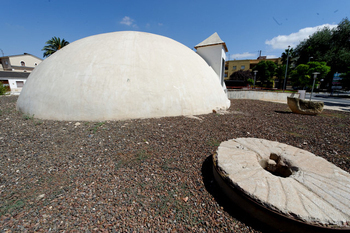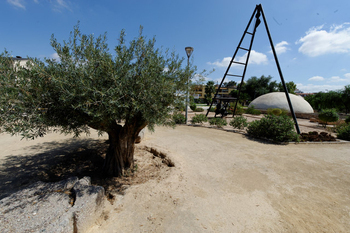- Region
- Águilas
- Alhama de Murcia
- Jumilla
- Lorca
- Los Alcázares
- Mazarrón
- San Javier
-
ALL AREAS & TOWNS
- AREAS
- SOUTH WEST
- MAR MENOR
- MURCIA CITY & CENTRAL
- NORTH & NORTH WEST
- TOWNS
- Abanilla
- Abarán
- Aguilas
- Alamillo
- Alcantarilla
- Aledo
- Alhama de Murcia
- Archena
- Balsicas
- Blanca
- Bolnuevo
- Bullas
- Cañadas del Romero
- Cabo de Palos
- Calasparra
- Camping Bolnuevo
- Campo De Ricote
- Camposol
- Canada De La Lena
- Caravaca de la Cruz
- Cartagena
- Cehegin
- Ceuti
- Cieza
- Condado de Alhama
- Corvera
- Costa Cálida
- Cuevas De Almanzora
- Cuevas de Reyllo
- El Carmoli
- El Mojon
- El Molino (Puerto Lumbreras)
- El Pareton / Cantareros
- El Raso
- El Valle Golf Resort
- Fortuna
- Fuente Alamo
- Hacienda del Alamo Golf Resort
- Hacienda Riquelme Golf Resort
- Isla Plana
- Islas Menores & Mar de Cristal
- Jumilla
- La Azohia
- La Charca
- La Manga Club
- La Manga del Mar Menor
- La Pinilla
- La Puebla
- La Torre
- La Torre Golf Resort
- La Unión
- Las Palas
- Las Ramblas
- Las Ramblas Golf
- Las Torres de Cotillas
- Leiva
- Librilla
- Lo Pagan
- Lo Santiago
- Lorca
- Lorquí
- Los Alcázares
- Los Balcones
- Los Belones
- Los Canovas
- Los Nietos
- Los Perez (Tallante)
- Los Urrutias
- Los Ventorrillos
- Mar De Cristal
- Mar Menor
- Mar Menor Golf Resort
- Mazarrón
- Mazarrón Country Club
- Molina de Segura
- Moratalla
- Mula
- Murcia City
- Murcia Property
- Pareton
- Peraleja Golf Resort
- Perin
- Pilar de la Horadada
- Pinar de Campoverde
- Pinoso
- Playa Honda
- Playa Honda / Playa Paraíso
- Pliego
- Portmán
- Pozo Estrecho
- Puerto de Mazarrón
- Puerto Lumbreras
- Puntas De Calnegre
- Region of Murcia
- Ricote
- Roda Golf Resort
- Roldan
- Roldan and Lo Ferro
- San Javier
- San Pedro del Pinatar
- Santiago de la Ribera
- Sierra Espuña
- Sucina
- Tallante
- Terrazas de la Torre Golf Resort
- Torre Pacheco
- Totana
- What's On Weekly Bulletin
- Yecla


- EDITIONS:
 Spanish News Today
Spanish News Today
 Alicante Today
Alicante Today
 Andalucia Today
Andalucia Today
The Museo del Agua in Fuente Álamo
Fuente Álamo water museum
Residents driving to the Mercadona supermarket in Fuente Álamo may have cast a glance at the structures set back from the roadside behind a neatly clipped hedge just opposite the rambla, without realising what they are actually looking at.
This is an open-air museum, dedicated to the management of water before the construction of the Tajo water supply canal which brought water to the south-east of Spain and gave the farmers and residents of this region access not only to more piped tap water, but also to irrigation water. Irrigation has since completely transformed the economy of Murcia over the last 50 years.
Before the arrival of these systems, rainwater was collected and stored in domed "aljibes" or cisterns, the remains of which can be seen across the region today, and hauled out of the ground from deep, hand-dug wells using animals and tripod pulleys, or collected from springs and ramblas. The name of Fuente Álamo means the spring of the poplar tree, referring to the freshwater spring around which the town grew, and the volumes of water available always depended on the climatic fluctuations which have brought floods and droughts throughout the centuries.
 Here in this little street corner, a collection of exhibits has been gathered together to reflect the daily task of water management, the exhibits clustered around the largest aljibe in south-east Spain.
Here in this little street corner, a collection of exhibits has been gathered together to reflect the daily task of water management, the exhibits clustered around the largest aljibe in south-east Spain.
The Aljibón de Corverica dates from the 19th century, and is five metres deep wtih a radius of 6 metres. It has the shape of a hemispherical vault and is made from limestone, finished with sand and quicklime. It was built on the land of the Corverica estate, which belonged to the Marqués de Galtero, in order to collect rainfall and, together with the Aljibe de las Ánimas, which no longer survives, to supply water to the inhabitants, farmers and cattlemen of the town of Fuente Álamo.
Popular legend has it that while the vault was being built it collapsed several times due to the unusual size and shape of its design. As a result, three brothers from the town - two of them Ramón Antonio and Paco Muñoz, who were master builders - were called in to supervise the work, and decided to fill the vault under construction with tons of straw in order to support it until the work was completed.
 Following this, the vaulted roof was completed satisfactorily and remained intact.
Following this, the vaulted roof was completed satisfactorily and remained intact.
Even now it is still possible to read an inscription painted in red clay, supposedly made by Ramón Muñoz, boasting that this is the "biggest vault", and that it was made despite people saying it would collapse. The inscription also bears the name of Eduardo Casanova, the Marqués de Galtero, and is dated 17th August 1883.
The Aljibón de Corverica was restored in 2001, maintaining the original dome in perfect condition, and was incorporated into what is now known as the Museo del Agua.
The displays include the square which bears the name of the Aljibón. The museum has a total floor area of 2,450 square metres, and the open-air exhibits include all kinds of hydraulic structures, such as water wheels, syphons used in the irrigation ditches and tripod structures which were used to take water from the old hand-dug wells.
The park is an open-air structure so there are no opening times: just wander in and have a look!
 There is also a shaded area to sit in during the summer. So next time you're picking up a bag of dog food or a pack of bananas in Fuente Álamo, walk across the road and have a look at this little open-air museum - it certainly engenders a sense of respect for the facilities we enjoy today and a realisation of just how precious water supplies were to the residents who have inhabited this whole area in the last 5,000 years!
There is also a shaded area to sit in during the summer. So next time you're picking up a bag of dog food or a pack of bananas in Fuente Álamo, walk across the road and have a look at this little open-air museum - it certainly engenders a sense of respect for the facilities we enjoy today and a realisation of just how precious water supplies were to the residents who have inhabited this whole area in the last 5,000 years!
Click for map, Avenida de Los Reyes de España.

